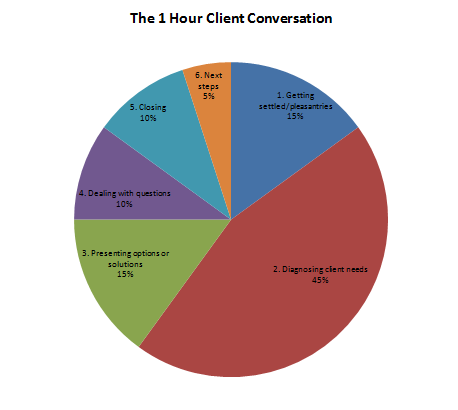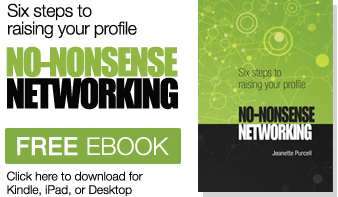
The buzz about the Brain Exchange

One cold January day back in 2013 I was chatting to a business colleague about the joys of self employment after years of working for large organisations.
“But do you know what I don’t like about running my own business?” I said. “It’s that there is no one to talk to when I need to make a big decision or when I am thinking through a new idea or problem. Wouldn’t it be great if we could get access to some peer group support once a month, where we can do some ‘thinking aloud’ with other business people?”
As we talked, it became clear that my complaint was quite common among people who were either self-employed or running small enterprises. And we realised that, although there are many business groups and networks in existence, none of them addressed this particular problem. And that is how the Brain Exchange started.
Today the Brain Exchange is a regular fixture in Central London attended by growing numbers of people from different walks of life and backgrounds. Here’s how it works….
What is the Brain Exchange?
The Brain Exchange is a unique forum for business professionals to share experiences, exchange knowledge and find inspiration within a confidential and supportive environment. It’s not just a network or a talking shop – each meeting of the Brain Exchange is professionally facilitated to ensure that discussions are structured and focused on achieving results.
Who is it for?
Brain Exchange members are senior professionals working in a diverse range of roles and sectors. Current members include CEOs, entrepreneurs, social enterprises, freelancers, small business owners and senior managers.
How does it work?
Meetings of the Brain Exchange are held monthly in London from 18.30 to 20.30. There are eight spaces available at each meeting and places are reserved on a first come first served basis.
With direction from a professional facilitator, the group spends one hour exploring an issue presented by a group member who volunteers for the ‘hot seat’. The discussion follows an agreed structure to encourage full participation and the consideration of all view points. The final part of the discussion is focused on drawing conclusions from the discussion and identifying possible actions. The formal part of the meeting is followed by drinks and networking.
All discussions are strictly confidential so that members can be completely and honest about the problems that keep them awake at night.
What are the benefits?
If you’re in the ‘hot seat’ you benefit from what is in effect an hour of business coaching. But everyone benefits from being part of the discussion. All participants get:
- Eight different perspectives on an idea or problem
- New ideas for your business and new approaches to business problems.
- The opportunity to step back and reflect on your situation, your business and the future
- Access to support from fellow professionals in a confidential environment.
- New networks and business connections
- The opportunity to learn from others with different skills, knowledge and areas of expertise
What are people saying about the Brain Exchange?
“It’s like having a ready-made super-professional Advisory Board”
“The meetings are professional and focused – you get real value in less than two hours.”
“For my family-run business it’s a way of tapping into expertise and experience that we don’t have inside the company.”
“I gained a lot from being in the hot seat – I came away with solutions and ideas for re-energising my business.”
“Knowing that other people experience the same problems is so reassuring.”
“It’s like business-coaching but with added benefits!”
How can I join?
Membership of the Brain Exchange is by invitation only. You can be introduced by an existing member or apply direct to the Brain Exchange by contacting Jeanette Purcell. You should ideally have senior level business experience, be willing to share your experiences and ideas and be a good listener.
What’s the buzz? It’s the Brain Exchange.
For more information see http://jeanettepurcell.com/brain-exchange/
Tony Benn – not a leader but a champion

I had the pleasure of meeting Tony Benn in 1979 when he was campaigning for the May General Election (won by the Conservative party). He stood on a box outside my flat in South East London in front of a small polite crowd and I listened in awe to his passionate speech. He was already a hero of mine but when I met him he won me over with his clear vision or a fair and democratic society. He was also charming and sincere. Tony Benn was one of the people who helped to form my political views and inspired me to take more interest in political affairs. As time went on I did not agree with everything that he said or did but I admired him. I am not sure whether there are many politicians today who are prepared to stand by their beliefs and principles and to keep fighting for them no matter what. Tony Benn did have this courage – he was completely uncompromising.
Tony Benn stood against Denis Healey in the Labour Party’s Deputy Leadership election in 1981. He lost the contest. We can speculate about how successful he might have been in this leadership role. I suspect that the job may not have suited him and those close to Tony Benn have suggested that, over time, he too realised this. Perhaps he was always going to be happier as a ‘dissenting minister’.
When asked how he would like to be remembered Tony Benn said “I would be very pleased when I die if somebody put on a stone ‘Tony Benn – he encouraged us’.” He did more than that. He demonstrated the importance of courage, commitment and authenticity. How many leaders can claim to do the same?
Can you recognise talent in your team?

Recruitment is a costly process for most businesses. Yet so often companies start the recruitment process without fully considering the potential they have internally.
The advantages of identifying and promoting talent from within the business are numerous: you save on the cost of recruitment, you avoid the risk of taking on someone who is unknown to the company and its culture, you significantly reduce the time required for induction or ‘learning the ropes’ and, by promoting internally, you reduce the risk of losing good ambitious staff who might be feeling stuck in their role.
The reason given for not promoting internally is often that no one in the current team meets the requirements of the job. But think carefully – a more proactive approach to staff development and engagement will help to seek out the talent and potential in your company that you probably didn’t realise was there.
Most people can think of instances when they or someone they know have been working away in a position which does not allow them the opportunity to shine or to demonstrate what they really have to offer. They may be in a job that doesn’t make the best use of their skills, they may be poorly managed and have not been encouraged to take on new challenges. Whatever the reason, hidden potential can be unearthed by committing to a straightforward staff development programme. Staff development programmes help to keep your best staff by engaging them in development opportunities and getting them to think about how they can improve and grow with the company. A good staff development programme takes some planning but the return on your investment in a programme is significant. You save on recruitment costs, you attract good people to your company and you engage and develop top talent from within.
Of course, there is another benefit from adopting a proactive approach to developing your talent – it tends to show up those people in your team who are not cut out for promotion or who simply do not have the level of commitment you’re looking for. Dealing with these people is crucial and represents the other, less talked about, side of effective talent management.
How to be an engaging conversationalist

How many times have you had a conversation with someone whose opinion about you really matters and walked away feeling dissatisfied about how it went? Sometimes we fail to present ourselves positively or forget to mention a really important point. Other times we might feel we lost the opportunity to build a rapport with the person. Were you aiming to build a better working relationship with them? If so, how likely are they to want to talk to you again?
There are many work situations where the pressure is on to make a positive impression during a short conversation – these include interviews, networking events and meeting a new boss. I’m interested in the conversations where the objective is to build a rapport and develop a positive working relationship. You might want to get to know an influential, senior person in your organisation. Or perhaps you are working on a project with a client and want to extend your networks to the key decision makers within the company. Let’s say you’ve arranged a meeting with that all important influential person. Great! That’s the first step. Now, how can you make the most of this opportunity to impress?
First be clear about the objective of the conversation and prepare for it. Anticipate their questions and have some answers ready, or rehearse the way you will present your ideas. If there is no particular agenda then treat this as an opportunity to do some fact-finding. This is a great way to demonstrate interest in the person, their role and their objectives. It involves a lot of listening and the use of intelligent questions. Here’s a useful crib sheet for this type of conversation. I have used this on many occasions to help high-flying Executives who find themselves lost for words when it comes to small talk! It’s very simple and surprisingly effective.
1. Open with a brief introduction and explanation for the discussion. “I’m interested in getting some feedback on X” or “I’d appreciate some advice on X” or even “I’m on a fact-finding mission..”
2. Use open questions. (Who? What? Why? How? When?) “Why do you think that’s happening?” or “Who would be a good person to speak to about that?” or “What do you think would improve that situation?”
3. Use affirmative statements. “I see” or “that’s interesting”
4. Check your body language. Smile, nod or show concern as appropriate. Keep an open posture (arms uncrossed, lean forward), maintain some eye contact and don’t fidget!
5. Explore the relevant issues further. Direct the conversation by picking up on points that are useful to you. “Can you expand on that?”
6. Clarify and check understanding. “So, if I have understood this correctly…” or “so I think you’re saying that….” Or “so just to be clear…”
7. Summarise and suggest next steps. “So, can I just recap – (points a, b, and c)” or “I’d like to come back to you by (date)…with some options…”
8. Thank them! “I really appreciate you taking the time to see me. It’s been very useful.”
Every situation is different and you’ll need to use some judgement about what is appropriate or effective in each case. The point is, be prepared to listen and fully attend to the other person – sounds easy but very few people can do this well.
For more listening tips see JPA’s Top Ten Tips for Effective Listening.
Top Ten Tips for Effective Listening
Why people resist change

When managing change in business the focus is so often on monitoring time, money and process. It’s true that good project management skills are essential to successful change management, but we also need to lead people through the process and this involves understanding how human beings react to change.
The behaviour of my friend’s three year old daughter, Anna, illustrates the point. My friend was moving out of London to a bigger house in the country. She had told her daughter about the move but Anna had not reacted well and was refusing to enter into any discussions about her new life in the country. My friend explained to me that, every morning on the walk to Anna’s nursery in London, they passed a primary school. In the playground of this school were three bright yellow swings. “That’s the school I want to go to so that I can play on those swings” Anna had said. Her interest in swings seemed to be at the heart of her resistance to moving. Realising this, my friend checked out the primary school that her daughter would be attending in the country. Not only did this school have swings in the playground but also a climbing frame and a sandpit! She took Anna to see the school and the three year old was immediately converted. As the day of the move grows closer they have been visiting the new school as often as they can to maintain Anna’s enthusiasm. My friend’s daughter is now looking forward to her new life in the country – everyone is happy!
Although this story appears to be far removed from the complexities of the workplace, it does demonstrate some of the most fundamental principles of effectively managing and leading people through change.
1. Clearly articulate the benefits of change to your team. “We are moving and it’s going to be great” is not good enough. Human beings are naturally resistant to change and will not co-operate unless they understand and feel excited by the end goal.
2. Don’t assume that your enthusiasm for change is going to be shared by others. When talking about the new future think about what will motivate different people to support the project. Anna didn’t share her mother’s excitement about the new house, but she could become very enthusiastic about new swings! Similarly, in an ICT change programme for example, your Board of Directors might be turned on by the prospect of a good looking new website whereas, for your Finance team, the prospect of more streamlined processes for invoicing is more likely to motivate them to support change. Amend your change message for different audiences, find out what life looks like from their perspective, and highlight the benefits that will appeal directly to them.
3. Try to make your vision of the new future as clear and tangible as possible. My friend didn’t just talk to Anna about the new school, she took her there so that Anna could see for herself. Can you make the benefits of change come alive for your team?
4. Remind your team of the long term vision and the benefits of change at regular intervals. When the going gets tough and the end seems a long way off it is easy to lose sight of the overall goal. Keep that goal at the front of people’s minds to maintain their morale and motivation.
When dealing with adults it is useful to remember that some of the most childish instincts are at the heart of resistance to change. If you understand and deal with these instincts you have a much better chance of leading a motivated, supportive team through the change process.
Join the JPA Master Class “Managing change without the pain” on 20 May 2014
It’s networking Jim, but not as we know it

I was coaching a client this week who recently became self-employed after working as a project manager for many years. She had already completed a couple of jobs on a freelance basis and there were more in the pipeline. “The thing is” she said “all the work I’ve done so far has come through word of mouth. At some point I will have to advertise and do some real marketing”. I queried this with her, suggesting that she must have some great networks that she could tap into for more business. “Ah, but I’m no good at networking” she replied “I haven’t got time to go to all those events and anyway that sort of thing scares me!”.
Now, this conversation highlights two very common misunderstandings about networking.
The first misunderstanding is that acquiring business through word of mouth is somehow not ‘real’ marketing. More than that, there is a tendency to assume that referrals or personal recommendations are more about luck than successful marketing. Absolutely not! You don’t get referrals unless you have a great reputation and can be trusted to do a good job. If you are proactive about maintaining the relationships that you have with people in your industry you will find that these relationships lead to new connections and new business. Word of mouth is THE most important form of marketing for small businesses. Don’t dismiss or ignore it!
The second misunderstanding is that networking is all about going to events, receptions and conferences. Most people will tell you that they associate the word ‘networking’ with the experience of walking into a drinks reception full of people they don’t know and being expected to ‘work the room’ (dreadful phrase). I can’t remember the last time I went to a networking event and yet I am networking all the time. Yes, you’ve got to get out there and meet people to build your business, and you’ve got to do some selling. But you don’t have to attend events or put yourself into unfamiliar situations to achieve this. Networking is about building relationships with people you like, admire and trust. Start building your networks by talking to people who already know and love you. Ask them for advice, ask them for introductions to people who might want what you’re selling. This form of networking is ten times more successful than cold calling, expensive advertising or collecting a few random business cards at a networking event.
My client visibly relaxed when she thought about networking differently. It’s not hard work, it needn’t be scary, but good networking is essential to developing your business.
Don’t miss JPA’s Master Class “Positive Impact and Confident Networking” on 25 February 2014. Early bird booking discount applies until 28 January 2014. Find out more here http://jeanettepurcell.com/jpa-master-class-series/
Are you listening to your clients?

I was talking to a group of business people recently on the subject of winning and keeping clients. We agreed that face to face conversations with clients are the best opportunity you have to win them over. It’s a shame then, that this critical stage in the process is often poorly managed. When we’ve done all our marketing and networking and have actually got a hot prospect who is willing to sit down and have a discussion with us, we go and mess it up. Why is this? Most of the time it’s because we are so intent on selling our product or idea that we forget to listen. Remember, the aim is not to dump information on the client. Rather, the intention is to identify what their problem or challenge is, show how your product or service can help them and then elicit a positive response.
So a large part of the conversation will involve listening to the client, asking them questions and being interested in what they are saying. Sounds easy doesn’t it? It’s not. Listening patiently is hard – we are all too eager to say our piece and jump in with our solutions. But if you can spend time allowing your client to talk, and being genuinely interested, they will be delighted and impressed. And that’s how you begin to establish a sustainable trusting relationship – the kind of relationships that are more likely to bring you business. Because we tend to do business with people we like and trust.
A colleague of mine, Jamie Hancox of ‘buyingtime’ (http://www.buyingtime.co.uk/), gave me the idea of describing the perfect client conversation. So I created this diagram to show the key stages of the discussion (see above). This format is not intended to be prescriptive. It simply illustrates just how much time is spent on understanding the client and diagnosing their needs. Of course, you still have to describe the benefits of what you do and you have to close the sale (it’s all too easy to shy away from this crucial bit!) but those parts take up relatively less time.
Remember, companies do not make the decision to hire or buy. People do. The relationship you build with people in your client organisations is crucial to your business. Try listening, it’s very effective.
Why coaching works

Some people baulk at the cost of coaching but, when you consider the value of coaching when compared to other forms of training, it suddenly becomes an investment worth making. Why does coaching work?
- It’s a one-to-one exercise where all the attention and focus is on you. You get to decide what you want to achieve and what specific topics you want to discuss at each session.
- You get to think aloud and talk through issues with an expert who will guide you through the problem-solving process. No one is judging you and there are no interruptions or distractions for the duration of your session.
- You get an opportunity to try out new ideas or behaviours in a supportive environment. Rehearse a presentation or a difficult conversation and get some professional feedback and constructive suggestions for improvement.
- You can measure your progress. Any good coach will talk to you about what you want to achieve by the end of the programme and how success will be measured. People assume that the benefits of coaching or training can’t be measured – they can!
Choose your coach wisely. They should be someone with real business experience as well as coaching experience. And you should feel entirely comfortable with them – ask for a trial session before you commit. With the right coach you will quickly recognise the benefits of coaching – it’s a small investment for a significant return.
How personal impact can make the difference

As a Trustee of a Community Trust in South East London I was recently involved in the appointment of a full-time youth worker. There was a lot of interest in the position and interviews were held with six short-listed candidates. The interview panel asked each candidate the same questions and carefully scored each person against their ability to meet the requirements of the job. At the end of a long day two candidates stood out from the others and both had achieved exactly the same score. How to choose between them?
The interview panel began to discuss which candidate came across best in the interview. We discussed ‘likeability’ – something that’s hard to define but often referred to as ‘personal impact’. For two candidates, both equal in terms of their skills and experiences, it was the positive impact they made with the panel that made the crucial difference. What does personal impact mean and how do we know it when we see it? There are probably three key factors that help to achieve personal impact:
- A smile is so important – it conveys warmth and enthusiasm. When you smile you are letting others know that you are feeling positive and enjoying their company.
- Positive body language. The candidate we interviewed who sat back in the chair with their arms folded was less engaging than the one who sat forward keeping an open posture. A little animation when you are talking helps to demonstrate eagerness and interest in the discussion.
- Authenticity. People who come across as genuine, honest and human almost always generate a positive response from others. Be yourself, admit your weaknesses (we all have them!), show genuine concern and interest in what you do. Others will believe in you and warm to you as a result.
Personal impact is not easy to define, but with some attention to the way you look, move and talk it can be acquired. What’s more, it is as important to a youth worker as it is to any leader. Skills and experience can get you so far, personal impact makes the difference.
DON’T MISS THE JPA MASTER CLASS “PERSONAL IMPACT AND CONFIDENT NETWORKING” ON 10 DECEMBER 2013.
VISIT www.jeanettepurcell.com/jpa-master-class-series/ FOR MORE DETAILS.
How to manage the pain of change

While working on a major change management project I have been thinking about the nature of change and what it takes to manage the process successfully. It strikes me that many businesses struggle with an apparent tension between the desire to define their organisation’s strategy and structure for the foreseeable future, and the recognition that their world is in a constant state of flux. Of course the harsh reality is that, while the long term vision can remain constant, a company’s strategy must be flexible and capable of modification to reflect ever-changing internal and external environments.
The issues that arise in any change project are as much to do with people as process. Leading transformation successfully involves a deep understanding of people and their behaviour, knowing what is likely to motivate people to do things differently, why they resist change and how to communicate effectively throughout the process. It also involves identifying the people who are going to help you in your mission (the ‘change champions’) and those who are likely to generate conflict and hostility. The process nearly always involves taking some tough decisions about people and are likely to lead to difficult conversations with those who cannot cope with the transformation or the planned future. These people issues are probably the most difficult for any leader to manage successfully. What can we do to help people through change?
The process works best if your team works in an environment that enables change. In such a setting they are more likely to respond positively to the change you want to make. To create a ‘change-ready’ environment consider the following:
• Regularly set the expectation that things will change and continue to change
• Explicitly encourage and recognise behaviours that support or enable change
• Support continuous innovation and improvement in working practices
• Give your team familiarity with change. Involve them in change projects
• Establish a culture that values flexibility and encourages flexible ways of working . In this way people are less inclined to feel they own a job or have various entitlements that might hold up the change process.
Change projects may be large scale but never forget that change happens at the individual level. You can’t necessarily deal with everyone individually but certain steps should be taken to consider how your people will fit into the new scenario. Consider the following questions for each person affected by the change:
• Do they understand the change and what it means for their role?
• Are they capable of working in the new set up? Who needs coaching or training?
• Are they willing to work in the new set up
• Are they motivated to work differently without reverting to the old ways of working
As the saying goes “We change our behaviour when the pain of staying the same becomes greater than the pain of changing.” Pain is an inevitable aspect of change. But however uncomfortable or difficult it may be, you must be able to manage change successfully. Change is not an occasional event but an ongoing part of every manager’s job.


















